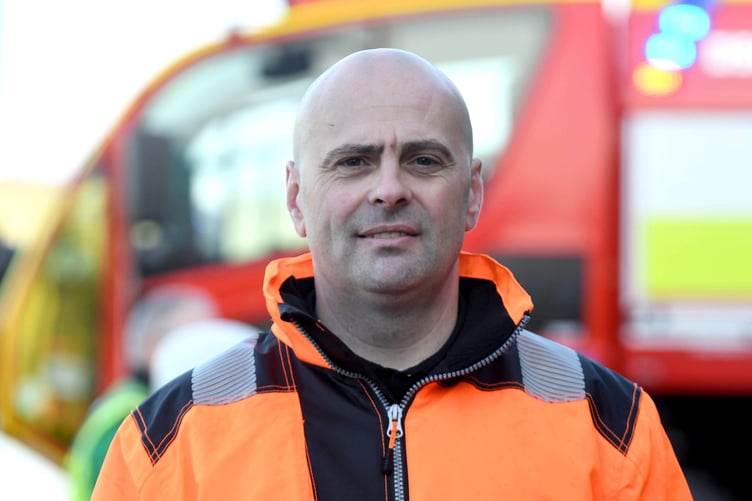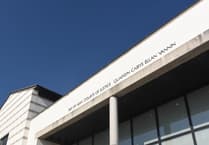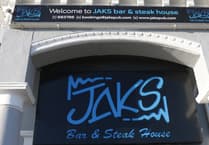All of the island’s emergency services took part in a crash simulation exercise at Ronaldsway Airport on Sunday to test their preparations and crisis management.
It was needed to fulfil licensing requirements set by the Civil Aviation Authority.
The scenario was that a plane had crash landed and some debris had created a blaze, trapping passengers in the plane.
The fire service responded first to the incident which was taking place in its on-base training bay.
The service worked together quickly to douse the fire.
Airport director Gary Cobb was in attendance at the exercise.
He said: ‘I think the response by the airport fire team was very good, they got there quickly and they put the fire out.
‘Additional Isle of Man Fire and Rescue units again did a really good job and were also quick on the scene.’
The rescue team then helped 50 volunteers, whom were made up primarily of King William’s College students, out of the cabin, which actually was an old bus.
The emergency services involved were the police, ambulance, fire and rescue, civil defence, coast guard, all airport departments and the joint control room in Douglas, who were helping to co-ordinate the different teams.
As the initial passengers were led away, they were ushered onto another bus and taken to the survivor reception where they were processed, which would be where people would be re-united with family in the event of a real crash.
The next stage of the operation then began, which was the extraction of injured and dead passengers.
In order to assess the services’ ability to work together, they were told that a number of passengers had either made their way out of the aircraft or had been sucked out and they were scattered on the airfield.
The crew split up to find the missing wounded, and to make it even harder, they weren’t told how many there were out there.
There were a mix of live and dummy passengers used to help the services learn how to cope with different injuries found on a crash site.
The exercise aims to have the emergency services at the scene within three minutes of the incident being reported.
As well as ensuring the safety off all those in the crash, the aim is also to get the airport operational again as soon as possible.
Mr Cobb said: ‘If this was an actual incident then we’d have to process all of the survivors and then get them to hospital – that’s why it’s multi-agency.
‘After that it would be removing the aircraft and assessing the damage to the runway which could take quite a lot of time.
‘As you can see this is a burning wreck so it would take quite a few days to actually be able to get the airport operations back up and running, if not longer.
‘In exercises like this, co-ordination and teamwork are vital to the success of the operation and can mean life or death for the victims.’
Some officers were there to inspect the work of the services and add extra scenarios to test their colleagues.
The exercise director and head of the airport fire service, Matt Shaw, was present to oversee the teams and talked about the importance of the services working together in harmony.
He said: ‘It’s absolutely key, formulating a plan of how we deal with that ongoing incident and making sure that we’re all singing off the same hymn sheet.
‘We should know what tasks, what risks and what hazards are associated with the incident and putting a plan of action together from a tactical point of view.’
The airport cancelled all morning flights to facilitate the exercise which is necessary for the airport to continue to remain operational and gave the airlines the option to schedule flights in the afternoon.
However, no airlines scheduled any flights, instead choosing to move the passengers onto flights the day before or the day after.




.jpeg?width=209&height=140&crop=209:145,smart&quality=75)
Comments
This article has no comments yet. Be the first to leave a comment.